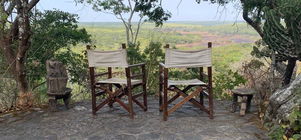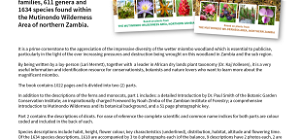Mushrooms and Mushrooming at Mutinondo

While you're here, why not hunt for the LARGEST edible mushroom in the world (Termitomyces titanicus - "Chingulungulu")!
During the rains, mushrooming at Mutinondo can be fantastically rewarding. Try our yellow truffles (Mycoamaranthus congolensis) and with the help of local Bisa knowledge, enjoy many other delicious pickings, which we can serve up for dinner.
Mushrooming at Mutinondo
The Mutinondo Wilderness area has an incredible array of wild mushrooms (see the list below), many of which are safe to eat. If you are picking to eat, do make sure you bring all mushrooms to one of our members of staff, who have a fantastic knowledge of the local edible species, and can quickly tell you which ones are good eating and which ones you should avoid.
For an additional fee, a member of staff can accompany you on a mushroom hunting expedition, to make sure that you get the right ones from the outset.
Please note that most of our mushrooms are only visible during the rainy season, primarily December to March.
Mushroom List:
Mutinondo mushroom list, by David Arora - author of “Mushrooms Demystified:
'All that rain brings us more mushrooms to enjoy. Some of the varieties found:
Agaricus augustus,
Amanita aff. rubescens
Luvosa,
Boletus genus,
Xerocomos genus,
Tylopilus genus,
Porphyrellus.
Smaller genera include: genus Afroboletus; genus Pulverobletus; genus Leccinum; genus Phlebopus; genus Boletellus; Chanterellus simoensil, C. platyphyllus, C. mimiatescens, C. pseudocibarius, C. cibarius, C. densifolius and C. congolensis; genus Lactarius; genus Kabansus and aff. Hygrophoroides; Termitomyces titanicus (Chingulungulu), T. microcarpus (Samfwe), T. letestui (Katoto or Chilkolowa).'









Share This Page